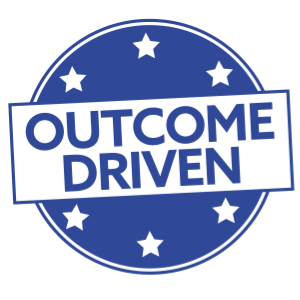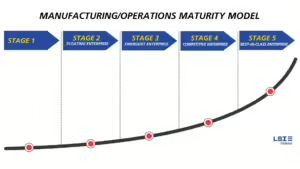Having a roadmap is crucial for digital transformation success because it provides a structured guide for organizations to navigate the complex process of adopting and integrating digital technologies. LSI has the experience and resources to help you develop a roadmap specific to your operation that will give you confidence in your digital transformation journey. Discover our roadmap process below.
Advantages of a roadmap
 A roadmap provides significant short-term and long-term advantages:
A roadmap provides significant short-term and long-term advantages:
- Gain a clear understanding of what digital transformation (DT) means for your business
- Define the business drivers for DT – visualize the outcome if your business does not pursue DT
- Identify the biggest challenges your business faces where a DT may provide solutions
- Assess the readiness of the organization to change
- Generate a plan that provides alignment, clarity, guidance, and a shared view of the future across the organization
- Build a culture driven from the top down
- Define metrics that can be compared so that value can be measured (e.g. ROI)
- Provides a vision/goal for the next 3-7 years
- Evaluate semi-annually – a moving window
- Helps to prioritize micro-projects to maximize benefits while minimizing costs – quick wins will help further justify the initiative and help gain general support/consensus
- Helps avoid urgent mistakes and one-off solutions – current solutions that impact other areas (Mfg Solution impacts supply chain) and conflict with the roadmap
- Identifies interdependencies and critical-path
- Drives benefits discussions
How to build a roadmap
While the specifics of developing a roadmap may differ based on client needs and objectives, the following steps often remain consistent.
- Analyze the challenges (e.g.):
- Reduce cost
- Improve quality
- Reduce time to market
- Break down organization silos (in systems and people)
- Develop one version of the truth
- Automate documentation/capture know-how
- Minimize exposure (track and trace/genealogy)
- Mitigate risks
- Reduce inventory
- Improve lead times and customer service
- Simplification/standardization
- Improve overall visibility of the enterprise
- Map to a framework
- Framework elements
- People
- Systems
- Equipment
- Process
- Analytics
- Material movement
- Maturity Model (see interactive model here)
- Framework elements
- Develop the plan
- Apply the best-fit technology/application/process to the solution
- Immediate actions
- Time
- Resources
- Activities
- Longer term actions – on the roadmap
Define the benefits
Defining the benefits is critical for success because it:
- Forces close examination of the value of the project and estimated ROI
- Creates organizational alignment
- Generates enthusiasm for the vision – people support what they create
- Establishes accountabilities
- Provides decision-making framework
- Both tangible and intangible benefits are important
- Benefits need to be traceable to Financial Statements and KPIs
This is an iterative process throughout the journey.
Summary
Developing a digital transformation roadmap may seem daunting at first, but the process doesn’t have to be overwhelming. Our team is here to provide guidance and support at every step of the process. In summary, it is important to remember:
- Think BIG
- Form a vision
- Evaluate opportunities
- Start small
- Design, develop, and implement small pilots to accelerate value and organizational buy-in
- Scale fast
- Scale solutions and get results
- Don’t wait for perfection, keep moving forward
- Become comfortable with change
LSI Listens
Developing a roadmap for your digital transformation starts with a conversation. When you are ready to get started or have questions on our process, contact us below — LSI Listens.

